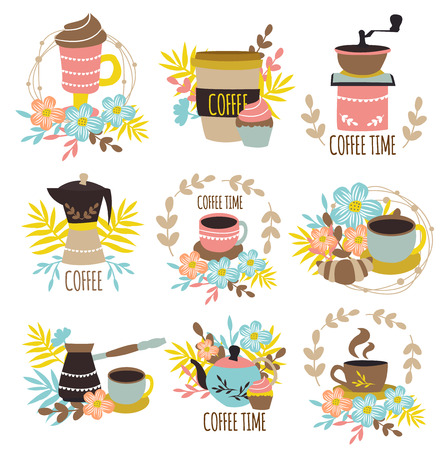Introduction to Pour Over Coffee and Filter Types
Pour over coffee has become a favorite brewing method among coffee lovers across the United States. Its rise in popularity is due to its hands-on approach, which allows drinkers to have more control over flavor, strength, and aroma. Unlike automatic coffee machines, pour over lets you enjoy the process and create a custom cup every time.
One of the key elements that affects the taste and texture of pour over coffee is the type of filter you use. There are three primary types commonly found in American kitchens and specialty cafes:
- Paper Filters
- Metal Filters
- Cloth Filters
Overview of Filter Types
| Filter Type | Main Material | Flavor Profile | Ease of Use & Cleaning |
|---|---|---|---|
| Paper | Disposable paper fibers | Clean, bright cup; removes most oils and fine particles | Very easy to use; single-use, throw away after brewing |
| Metal | Stainless steel mesh or perforated metal | Bolder, richer cup; retains more oils and some fine grounds | Reusable; rinse after each use; occasional deep cleaning needed |
| Cloth | Cotton or hemp fabric | Smooth, balanced cup; allows some oils but traps most fines | Reusable; must be washed thoroughly and dried properly after each use to prevent odors or mold |
The American Coffee Experience
The choice of filter doesn’t just impact flavor—it’s also about lifestyle and convenience. Whether you’re seeking an eco-friendly option or aiming for the cleanest cup possible, understanding these filters will help you brew coffee that matches your taste and fits your routine. As we explore each filter type in depth, you’ll discover how a simple choice can make a big difference in your daily coffee ritual.
2. How Filters Influence Flavor and Texture
When brewing pour over coffee, the type of filter you use—paper, metal, or cloth—plays a major role in shaping the flavor, aroma, and mouthfeel of your cup. Each filter material interacts with the coffee grounds and water differently, which impacts how much oil, fine particles, and solubles make it into your mug. Let’s break down the science behind each filter type and see how they affect your brew.
Paper Filters: Clean and Crisp Flavor
Paper filters are popular in American coffee culture for their ability to produce a bright, clean cup. Made from tightly woven fibers, paper traps most of the coffee oils (called diterpenes) and tiny grounds (fines). This results in a brew that is clear in both appearance and taste, with pronounced acidity and clarity.
How It Works:
- Oil Retention: Paper absorbs most oils, reducing body but highlighting delicate flavors.
- Particle Filtration: Fine mesh keeps out sediment, preventing muddiness in the cup.
- Mouthfeel: Light and smooth texture due to minimal oils and fines.
Metal Filters: Rich Body and Fuller Taste
Metal filters (often stainless steel) are reusable and eco-friendly. They have larger pores than paper filters, allowing more natural coffee oils and microscopic grounds to pass through. This enhances body (mouthfeel) and creates a richer, bolder flavor profile often favored by those who enjoy French press-style coffee but want the convenience of pour over.
How It Works:
- Oil Retention: Most oils make it into the cup, contributing to a creamy texture.
- Particle Filtration: Some fines pass through, adding thickness but potentially increasing bitterness if over-extracted.
- Mouthfeel: Heavier, sometimes slightly gritty depending on grind size.
Cloth Filters: Balanced Extraction
Cloth filters are less common but offer a unique middle ground between paper and metal. Made from tightly woven cotton or hemp, they let some oils through while trapping most fines. The result is a balanced cup with both clarity and enhanced body—a favorite among traditionalists and specialty coffee fans alike.
How It Works:
- Oil Retention: Allows moderate oil content for a smoother mouthfeel than paper.
- Particle Filtration: Catches most sediments while still delivering some richness.
- Mouthfeel: Clean yet fuller than paper-filtered coffee.
Filter Comparison Table
| Filter Type | Flavor Clarity | Coffee Oils | Sediment/Fines | Mouthfeel |
|---|---|---|---|---|
| Paper | Very high | Low | Minimal | Light & Smooth |
| Metal | Moderate | High | Some present | Creamy & Heavy |
| Cloth | High | Medium | Minimal | Smooth & Balanced |
The choice of filter can dramatically change your daily coffee experience. Whether you prefer the crisp notes from paper, the robust depth from metal, or the balanced harmony from cloth depends on your palate—and a little bit of science at work in every cup!

3. Environmental and Sustainability Considerations
When choosing a filter for pour over coffee, many Americans are increasingly mindful of the environmental impact and sustainability of their choices. Let’s look at how paper, metal, and cloth filters stack up in terms of eco-friendliness, waste generation, and long-term use.
Eco-Friendliness: A Side-by-Side Comparison
| Filter Type | Single-Use or Reusable? | Material & Production Impact | Waste Produced | Sustainability Factors |
|---|---|---|---|---|
| Paper | Single-use (mostly) | Made from wood pulp; bleaching process can affect environment | Creates daily waste; compostable if unbleached and chemical-free | If sourced from sustainably managed forests and composted, more eco-friendly; otherwise generates significant waste over time |
| Metal (Stainless Steel) | Reusable for years | Requires mining and manufacturing but lasts a long time | No daily waste; only replaced after several years of use | Initial impact offset by longevity; recyclable at end of life; reduces landfill waste significantly |
| Cloth (Cotton/Hemp) | Reusable (months to years) | Made from natural fibers; production varies in environmental impact depending on farming methods | No daily waste; eventually discarded after many uses | If made from organic materials and properly cared for, low impact; biodegradable when disposed of properly |
Addressing U.S. Concerns: Waste and Sustainability in Everyday Life
For many American households, convenience often drives the choice of filter. Paper filters are quick and easy but generate ongoing waste—something that adds up over weeks and months. While some areas offer composting programs for food-related paper waste, bleached or chemically treated paper filters may still end up in landfills.
Metal filters appeal to those looking to reduce their environmental footprint. Although making stainless steel involves significant resources, the filter’s ability to last for years means far less waste is produced overall. Many coffee lovers find the one-time purchase cost worth it both financially and environmentally.
Cloth filters strike a balance between sustainability and reusability. Made from renewable resources like cotton or hemp, they can be washed and reused many times before wearing out. However, they do require regular maintenance to prevent mold or odor buildup. When finally discarded, cloth filters made from natural fibers will break down much more quickly than synthetic products.
The Bottom Line on Sustainable Choices
If reducing waste is your priority, metal and cloth filters clearly outperform single-use paper options. For those who prefer paper for its flavor profile or convenience, choosing unbleached and compostable versions can help minimize your environmental impact. As sustainability becomes an even bigger part of everyday decisions in the U.S., understanding these differences empowers you to make coffee choices that fit your values as well as your taste buds.
4. Cost, Convenience, and Maintenance
Understanding Upfront and Long-Term Costs
When choosing a pour over coffee filter, it’s important to think beyond the initial purchase price. Here’s a breakdown of the typical costs for paper, metal, and cloth filters:
| Filter Type | Upfront Cost | Ongoing Costs | Average Lifespan |
|---|---|---|---|
| Paper Filters | $5–$10 for 100-count pack | Recurring (need to buy new packs regularly) | Single use |
| Metal Filters | $15–$40 one-time purchase | None (reusable) | Years with proper care |
| Cloth Filters | $10–$20 per filter | Minimal (may need replacement after several months) | Few months to a year |
Convenience: How Easy Are They to Use?
Paper filters are the most convenient for busy mornings. Simply place the filter, brew your coffee, and toss it when you’re done. No cleaning required, which is great if you’re always on the go.
Metal filters take a little extra time. After brewing, you’ll need to dump out the grounds and rinse the filter. It’s not difficult, but it does add a step to your routine.
Cloth filters require more attention. You have to rinse them thoroughly after each use and store them properly (often in water in the fridge) to prevent odors or mold. If you’re someone who enjoys the ritual of making coffee and doesn’t mind a bit of upkeep, this might work for you.
Maintenance and Cleaning Routines
Paper Filters: Minimal Effort Needed
- No cleaning required—just discard after use.
- No risk of old coffee oils affecting flavor.
- No special storage needs.
Metal Filters: Quick Rinse and Occasional Deep Clean
- After brewing, knock out grounds and rinse under warm water.
- Every week or so, soak in a mixture of vinegar and water or run through dishwasher (if dishwasher-safe) to remove any buildup.
- Avoid scrubbing with harsh materials that can damage mesh.
Cloth Filters: Gentle Care for Best Results
- Rinse immediately after use to prevent stains and odors.
- Boil in water every few weeks to deep-clean and sanitize.
- Store damp in a sealed container in the fridge; never let dry out completely as this can affect performance.
- If you notice off-flavors or persistent stains, it’s time to replace your cloth filter.
Practical Tips for American Coffee Drinkers
- If convenience is your top priority, paper filters are hard to beat—especially for quick weekday brews.
- If you value sustainability and don’t mind a little extra cleanup, try metal filters for their long-term savings and environmental benefits.
- If you love experimenting with flavor and enjoy coffee rituals, give cloth filters a try—but be ready for more hands-on care.
- No matter which filter you choose, following proper maintenance routines will help you get the best-tasting cup every time!
5. Cultural Preferences and Brewing Rituals in the U.S.
When it comes to pour over coffee, American coffee culture has its own unique set of preferences and rituals that influence filter choice. The decision between paper, metal, and cloth filters isnt just about taste—its also about tradition, lifestyle, and current trends among coffee enthusiasts across the country.
Tradition Meets Innovation
Many Americans were introduced to pour over methods through specialty cafes, where paper filters dominate for their convenience and consistent results. The association of paper filters with classic brands like Chemex or Melitta runs deep in American coffee history. However, as third-wave coffee culture grows, adventurous home brewers are exploring metal and cloth options for a more customizable experience.
Lifestyle Considerations
Lifestyle plays a big role in filter choice. For busy mornings or office settings, disposable paper filters are often preferred because theyre quick to use and easy to clean up. Environmentally conscious individuals might lean toward reusable metal or cloth filters to reduce waste. Here’s how these preferences stack up:
| Filter Type | Common Lifestyle Fit | Key Appeal in the U.S. |
|---|---|---|
| Paper | On-the-go, convenience seekers | Clean cup, easy disposal, widely available |
| Metal | Sustainability-minded, flavor chasers | No waste, richer body, reusable |
| Cloth | Traditionalists, eco-conscious hobbyists | Reusable, nuanced flavor, vintage feel |
Current Trends Among Coffee Enthusiasts
The rise of home brewing during recent years has led Americans to experiment with different filter types. Social media influencers and baristas often showcase metal and cloth filters for their sustainability and ability to highlight unique flavor notes. Meanwhile, many still stick with paper for its reliability and the clean-tasting cup it produces—a hallmark of American-style pour over coffee.
The Ritual Factor
Pourover brewing is as much about ritual as it is about taste. Some enjoy the meditative process of slowly pouring water over grounds; others appreciate the simplicity of dropping a paper filter into place. The ritual can be influenced by the filter: cloth requires extra care and cleaning (which appeals to those who love tradition), while paper fits a fast-paced morning routine.
6. Choosing the Right Filter for Your Pour Over Experience
Matching Filters to Your Taste Preferences
Your choice of filter can make a big difference in how your coffee tastes. Here’s a quick guide:
| Filter Type | Taste Profile | Who Will Love It? |
|---|---|---|
| Paper | Clean, crisp, highlights bright notes and acidity | If you like a lighter, more nuanced cup with no sediment |
| Metal | Richer, heavier mouthfeel with more oils and body | If you prefer bold flavors and a fuller texture |
| Cloth | Smooth balance—captures some oils but keeps out most fine grounds | If you want a middle ground between clarity and body |
Environmental Values: Sustainability Matters
If reducing waste is important to you, think about the environmental impact of each filter type.
| Filter Type | Eco-Friendliness | Considerations |
|---|---|---|
| Paper (bleached/unbleached) | Single use, compostable (if unbleached), but requires regular repurchase | Look for FSC-certified or biodegradable options for less impact |
| Metal (stainless steel) | Reusable for years, no paper waste generated | Needs regular cleaning to prevent buildup; initial cost higher, but pays off over time |
| Cloth (cotton/hemp) | Reusable and compostable at end of life; very low waste if cared for properly | Takes effort to wash and dry after each use; best for those willing to add this step to their routine |
Your Routine: Convenience vs. Ritual
Your daily habits and how much time you want to spend on your coffee ritual also matter.
If You’re Always On the Go:
- Paper filters: Quick cleanup—just toss after brewing.
- Metal filters: Just rinse and go; lasts forever if you don’t mind washing up.
If Coffee Is Your Morning Ritual:
- Cloth filters: Great if you love slow mornings and don’t mind extra care for that special cup.
A Simple Filter-Choosing Checklist:
- Taste first? Pick based on flavor profile above.
- Sustainability first? Go reusable—metal or cloth.
- No-fuss cleanup? Paper is easiest.
The perfect pour over filter depends on what matters most to you—taste, sustainability, or convenience. Try a few options to see which one fits your lifestyle best!


